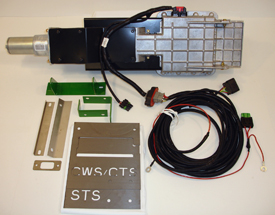
It is then discharged into the sewer or treated and returned to the body of water. In some cases, culture water is pumped into laboratory specimen tanks from local bodies of water, such as lakes or bays. Several EPA laboratories require water for aquatic culture research. This has saved approximately 1.5 million gallons of water and $6,000 to $9,000 annually.ĮPA’s Mid-Continent Ecology Division Laboratory pumps water from Lake Superior in Duluth, Minnesota.

Steam sterilizers use cooling water to temper steam condensate discharge from the sterilizer to the laboratory drain. WaterSense labeled weather-based irrigation controllers or soil moisture sensors are used to water only when plants need it. EPA selects audit professionals certified through a WaterSense labeled program. Landscape water use can also be reduced 10 to 20 percent by having an irrigation water audit. Planting native and drought-tolerant plant species minimizes the need for supplemental irrigation. Use Water-Smart Landscaping and Irrigation This cut water use 80 percent, saving the laboratory 24.8 million gallons of water and $235,000 annually.ĥ. The National Vehicle and Fuel Emissions Laboratory in Ann Arbor, Michigan, replaced its single-pass cooling system with a recirculated chilled water loop.Instead, facilities have air-cooled or recirculating chilled water systems. EPA strives to eliminate single-pass cooling in its laboratories. Single-pass cooling circulates a continuous flow of water just once through the system for cooling purposes before it goes down the drain. WaterSense labeled showerheads flowing at 2.0 gallons per minute (gpm) or less.įaucet aerators flowing at 0.5 gpm, well below the 2.2 gpm federal standard, have also been installed in most laboratories.WaterSense labeled urinals flushing at 0.5 gpf or less.New toilets with flow rates of 1.28 or 1.6 gpf.Nearly all EPA laboratories have since installed water-efficient fixtures, many of which have earned EPA’s WaterSense ® label for efficiency and performance. For example, toilets used 3.5 gallons per flush (gpf). Prior to that, most EPA facilities had inefficient sanitary fixtures.

Department of Energy established federal water-efficiency standards in the 1990s. The Environmental Science Center in Fort Meade, Maryland, saved 530,000 gallons of water and approximately $1,800 by reducing its cooling tower blowdown.Metering water put into and discharged from the cooling tower ensures the cooling tower is operating properly and can help identify leaks or other malfunctions. For maximum water efficiency, cooling towers should be operated at six or more cycles of concentration. The ratio of evaporation to blowdown is called the cycle of concentration.

Cooling tower operations can be optimized by carefully controlling the ratio of water discharged (blowdown) to water evaporated. Optimize Cooling TowersĬooling towers provide air conditioning for laboratories and are large consumers of water. This also assures the equipment is run correctly and maintained properly to help prevent water waste from leaks or malfunctioning mechanical equipment.Ī cooling tower at EPA’s Environmental Science Center in Fort Meade, Maryland 2. Metering and measuring facility water use help to analyze saving opportunities. Control Reverse Osmosis System Operation.Reduce Steam Sterilizer Tempering Water Use.Use Water-Smart Landscaping and Irrigation.Top 10 Water Management Techniquesįollowing are the top 10 water best management practices that EPA has implemented to reduce water use at facilities throughout the Agency. Learn more about EPA’s water management plans. EPA currently has 27 signed water management plans that outline the best management practice for 30 different facilities. Water management plans help individual facilities set long- and short-term water conservation goals. Through a combination of strategic planning, project execution and conservation efforts, EPA has been able to reduce water intensity over the past several years.


 0 kommentar(er)
0 kommentar(er)
